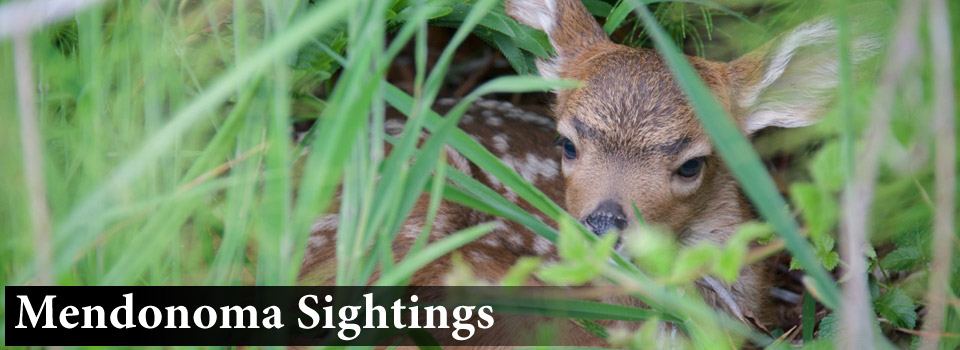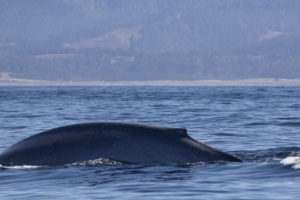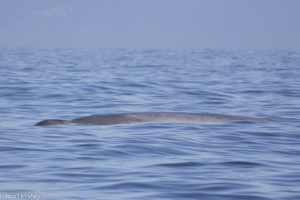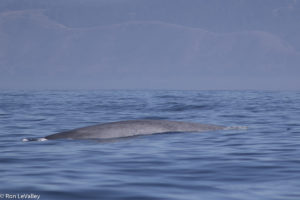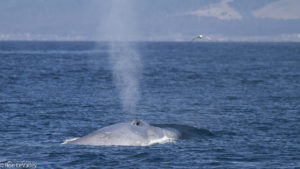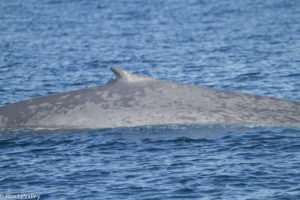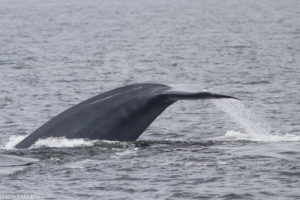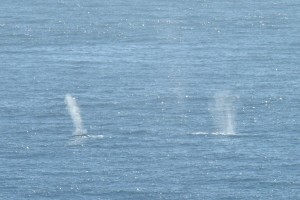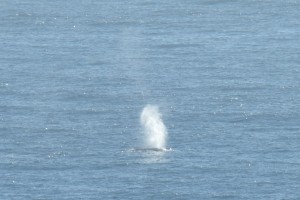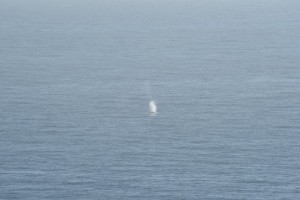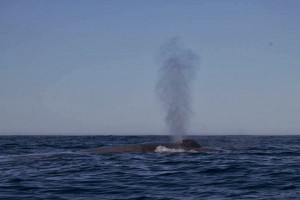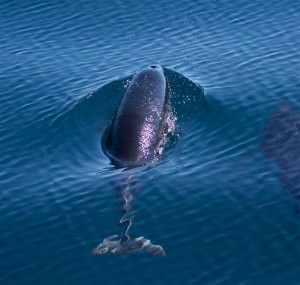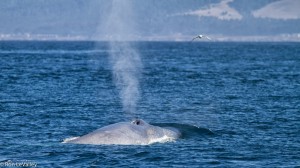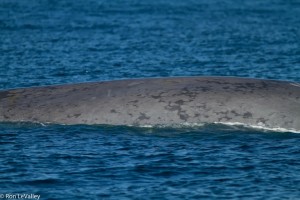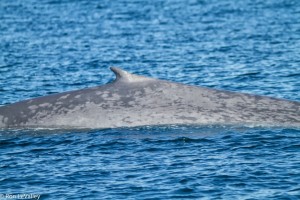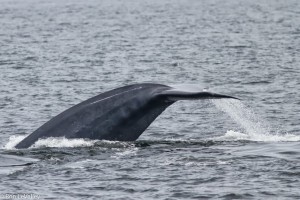Ron took a boat out of Noyo Harbor. He and the others on board got to see Humpbacks and a few Blue Whales.
Here you see the behemouth spouting.
And below you can see its mottled back. Ron tells me you can identify individual Blue Whales by the patterns on its back.
Here is the Blue Whale's very small dorsal fin.
And here's a photo of a Blue Whale's tail.
You won't see Blue Whales come out of the water much. They don't - probably can't - breach like Humpbacks or Gray Whales as they are so huge. They are extremely endangered as they try to recover from intense whaling of years past.
A reference book I enjoy is "Whales and other Marine Mammals of California and Baja" by Tamara Eder. She writes that at birth a Blue Whale weighs about 2.5 tons and is 23 feet long. An adult can weigh up to 200 tons (181,000 kg) and be up to 110 feet (34 m) long.
I was told some years ago that if you see an island in the ocean where there wasn't one before, you've just seen a Blue Whale.
Thanks to Ron for allowing me to share his photos with you here. To see much more of Ron's nature photography, here is the link to his website: http://www.levalleyphoto.com/home/
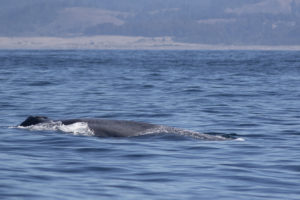 Here you see the tiny dorsal fin. Since the Blue Whale is believed to be the largest animal ever to live on earth, it's rather ironic that the dorsal fin is so small.
Here you see the tiny dorsal fin. Since the Blue Whale is believed to be the largest animal ever to live on earth, it's rather ironic that the dorsal fin is so small.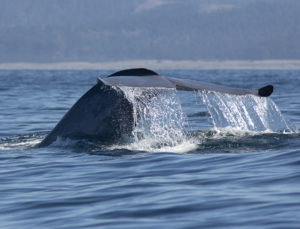 What a thrill this must have been to be so close to this huge Blue Whale!
What a thrill this must have been to be so close to this huge Blue Whale!